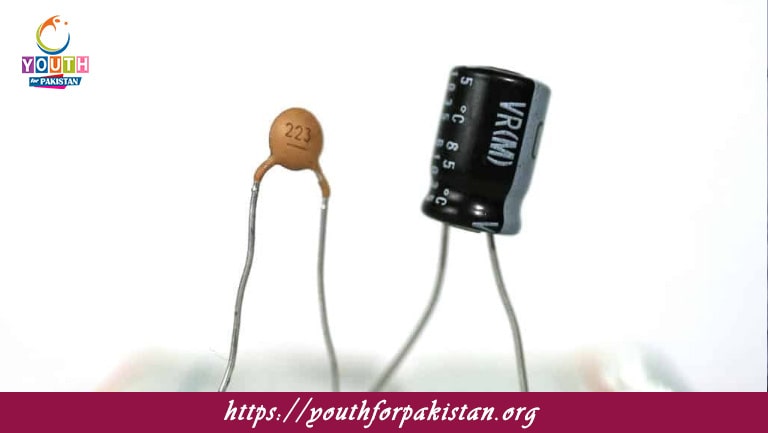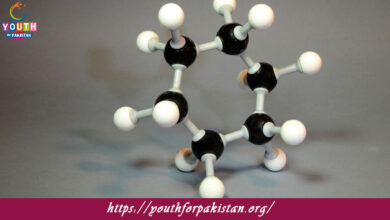Capacitor MDCAT MCQs with Answers

Welcome to the Capacitor MDCAT MCQs with Answers. In this post, we have shared Capacitor Multiple Choice Questions and Answers for PMC MDCAT 2024. Each question in MDCAT Physics offers a chance to enhance your knowledge regarding Capacitor MCQs in this MDCAT Online Test.
Capacitor MDCAT MCQs Test Preparations
Which unit is used to measure capacitance?
a) Ohm
b) Tesla
c) Farad
d) Watt
The capacitance of a capacitor is directly proportional to the:
a) Charge stored
b) Voltage across the plates
c) Distance between the plates
d) Area of the plates
A capacitor is a device used to:
a) Store energy in a magnetic field
b) Store energy in an electric field
c) Convert AC to DC
d) Convert DC to AC
The energy stored in a capacitor is given by:
a) 1/2 CV^2
b) CV^2
c) 1/2 CV
d) CV
What happens to the capacitance if the distance between the plates of a capacitor is doubled?
a) It is halved
b) It is doubled
c) It remains the same
d) It is quadrupled
Which of the following materials is used as a dielectric in a capacitor?
a) Copper
b) Aluminum
c) Plastic
d) Silver
In a parallel plate capacitor, if the plate area is increased while keeping the distance between the plates constant, what happens to the capacitance?
a) It decreases
b) It increases
c) It remains the same
d) It becomes zero
Which law explains the relationship between voltage, charge, and capacitance in a capacitor?
a) Ohm’s Law
b) Coulomb’s Law
c) Faraday’s Law
d) Gauss’s Law
In a series combination of capacitors, the equivalent capacitance is:
a) Equal to the sum of the individual capacitances
b) Less than the smallest individual capacitance
c) Greater than the largest individual capacitance
d) Equal to the average of the individual capacitances
What is the unit of charge stored in a capacitor?
a) Ampere
b) Volt
c) Coulomb
d) Ohm
When a capacitor is fully charged, the current through it is:
a) Maximum
b) Zero
c) Constant
d) Minimum
Which of the following factors does not affect the capacitance of a capacitor?
a) Distance between the plates
b) Area of the plates
c) Material of the plates
d) Dielectric material between the plates
In a DC circuit, a capacitor eventually acts as:
a) A resistor
b) A short circuit
c) An open circuit
d) An inductor
Which of the following is a type of capacitor?
a) Resistor
b) Inductor
c) Electrolytic
d) Transformer
The time constant of an RC circuit is defined as:
a) R + C
b) R/C
c) RC
d) 1/RC
What is the function of the dielectric in a capacitor?
a) To conduct electricity
b) To resist electricity
c) To increase the capacitance
d) To decrease the capacitance
Which of the following does not increase the capacitance of a capacitor?
a) Increasing the plate area
b) Decreasing the distance between the plates
c) Using a dielectric with higher permittivity
d) Increasing the voltage
Capacitors in AC circuits are used to:
a) Store charge
b) Block DC signals
c) Filter frequencies
d) All of the above
Which type of capacitor is polarized?
a) Ceramic
b) Film
c) Electrolytic
d) Mica
The total capacitance in a parallel combination of capacitors is:
a) Less than the smallest individual capacitance
b) Equal to the sum of the individual capacitances
c) Equal to the average of the individual capacitances
d) None of the above
What happens to the voltage across a capacitor when a dielectric material is inserted between the plates?
a) It increases
b) It decreases
c) It remains the same
d) It becomes zero
Which of the following is an application of capacitors?
a) Smoothing rectified output
b) Power factor correction
c) Energy storage
d) All of the above
The charge on a capacitor is given by:
a) Q = CV
b) Q = V/C
c) Q = C/V
d) Q = 1/2 CV^2
If the voltage across a capacitor is doubled, the stored energy:
a) Doubles
b) Triples
c) Quadruples
d) Remains the same
What is the effect of increasing the dielectric constant on the capacitance of a capacitor?
a) It decreases
b) It increases
c) It remains the same
d) It becomes zero
In a capacitor, the dielectric material is used to:
a) Conduct current
b) Store magnetic energy
c) Separate the plates
d) Enhance charge storage
The breakdown voltage of a capacitor is the:
a) Maximum voltage it can withstand without damage
b) Voltage at which it starts conducting
c) Voltage at which it discharges completely
d) None of the above
Which factor does not affect the capacitance of a parallel plate capacitor?
a) Plate area
b) Distance between plates
c) Dielectric constant
d) Thickness of the plates
What happens to the capacitance if the dielectric constant of the material between the plates is increased?
a) It decreases
b) It increases
c) It remains the same
d) It becomes zero
The primary purpose of a capacitor in an electrical circuit is to:
a) Induce electromotive force
b) Store electrical energy
c) Resist the flow of current
d) Generate heat
The reciprocal of capacitance is called:
a) Conductance
b) Resistance
c) Inductance
d) Elastance
In an AC circuit, the capacitive reactance is given by:
a) Xc = 1/(2πfC)
b) Xc = 2πfC
c) Xc = R^2 + (ωL – 1/ωC)^2
d) Xc = (2πfL)/R
Capacitors are commonly used in:
a) Voltage regulation
b) Signal processing
c) Motor starting
d) All of the above
The electric field in a parallel plate capacitor is:
a) Non-uniform
b) Zero
c) Uniform
d) Inversely proportional to the voltage
If a charged capacitor is disconnected from the battery, the charge on the plates:
a) Increases
b) Decreases
c) Remains the same
d) Becomes zero
Which of the following is true for a capacitor in a steady-state DC circuit?
a) It continuously stores energy
b) It continuously discharges
c) It has zero current
d) It has maximum current
In a capacitive circuit, the voltage:
a) Leads the current
b) Lags the current
c) Is in phase with the current
d) Is zero
A 10 µF capacitor is connected to a 12V battery. The charge stored is:
a) 1.2 C
b) 0.12 C
c) 1.2 mC
d) 120 C
What is the effect of decreasing the plate separation in a parallel plate capacitor?
a) Decreases capacitance
b) Increases capacitance
c) Decreases stored energy
d) Increases voltage
The work done in charging a capacitor is:
a) 1/2 QV
b) QV
c) 1/2 CV^2
d) CV^2
If you are interested to enhance your knowledge regarding Physics, Chemistry, Computer, and Biology please click on the link of each category, you will be redirected to dedicated website for each category.





